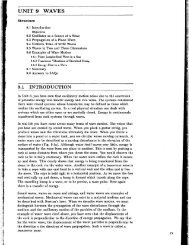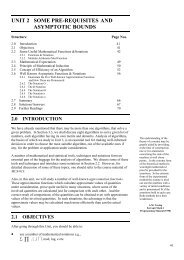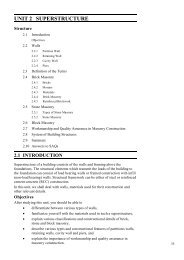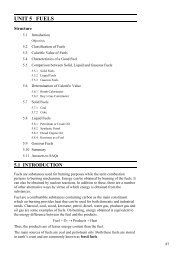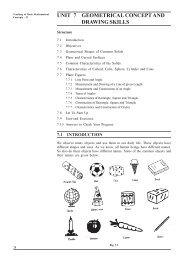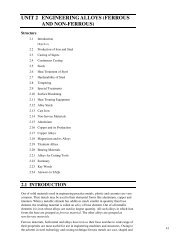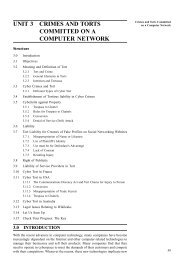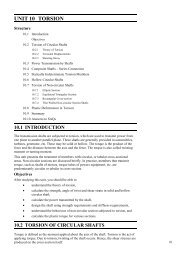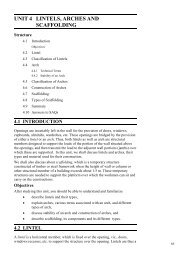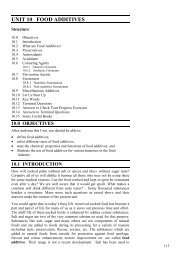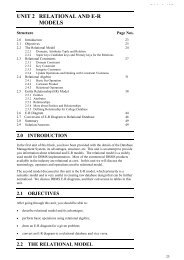unit 1 differential calculus - IGNOU
unit 1 differential calculus - IGNOU
unit 1 differential calculus - IGNOU
You also want an ePaper? Increase the reach of your titles
YUMPU automatically turns print PDFs into web optimized ePapers that Google loves.
Remark<br />
(iv) Define a function q on D by setting<br />
f ( x)<br />
q ( x)<br />
= . The function p is<br />
g ( x)<br />
provided g (x) ≠ 0 for any x ∈ D. The function q is called the quotient<br />
f f f ( x)<br />
of f by g and is denoted by . Thus, ( x)<br />
= ,<br />
g g g ( x)<br />
(g (x) ≠ 0 for any x ∈ D).<br />
In case g (x) = 0 for some x ∈ D, we can consider the set, say D′ of all those<br />
f<br />
f f ( x)<br />
values of x for which g (x) ≠ 0 and define on D′<br />
by setting ( x)<br />
=<br />
g<br />
g g ( x)<br />
for all x ∈ D′.<br />
Example 1.4<br />
Consider the functions f : x → x 2 and g : x → x 3 . Find the functions which<br />
are defined as<br />
(i) f + g,<br />
(ii) f – g,<br />
(iii) fg,<br />
(iv) (2f + 3g), and<br />
(v)<br />
Solution<br />
f<br />
.<br />
g<br />
(i) (f + g) (x) = x 2 + x 3<br />
(ii) (f – g) (x) = x 2 – x 3<br />
(iii) (fg) (x) = x 5<br />
(iv) (2f + 3g) (x) = 2f (x) + 3g (x)<br />
= 2f (x) + 3g (x)<br />
= 2x 2 + 3x 3 .<br />
(v) Now, g (x) = 0 ⇔ x 2 = 0 ⇔ x = 0. Therefore, in order to define the<br />
f<br />
function , we shall consider only non-zero values of x. If x ≠ 0,<br />
g<br />
2<br />
f ( x)<br />
x 1<br />
f f 1<br />
= = . Therefore, is the function : x → , whenever<br />
g ( x)<br />
3<br />
x x<br />
g<br />
g x<br />
x ≠ 0.<br />
1.3.6 Composition of Functions<br />
We shall now describe a method of combining two functions which is somewhat<br />
different from the ones studied so far. Uptil now, we have considered functions<br />
with the same domain. We shall now consider a pair of functions such that the<br />
co-domain of one is the domain of the other.<br />
Let f : X → Y and g : Y → Z be two functions. We define a function h : X → Z by<br />
setting h (x) = g (f (x)).<br />
Differential Calculus<br />
19




